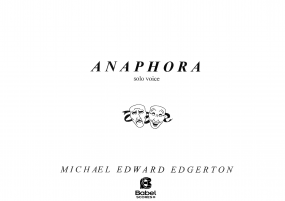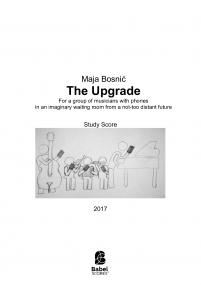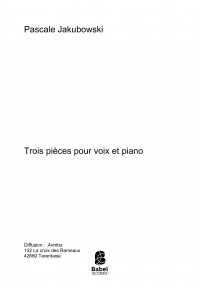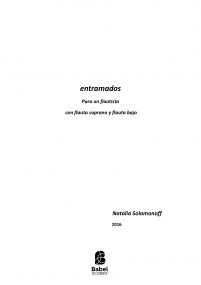Cataphora: lulus brevicum
#82 (2018)
8,76 €
Version papier (+14,80 € impression et livraison ). Colissimo7-14 days aprox.
Version numérique (+0,00 €) à télécharger
Chez BabelScores, quand vous achetez une partition, vous pouvez ensuite contacter directement le compositeur ici même !
Caractéristiques
Region
Europe
Estimated Duration
16 - 20min
Date
2018
ISMN : 979-0-2325-3960-7
Notes sur cette pièce Cataphora is influenced by the Ars brevis of Ramon Llull (1308), which uses geometrical figures and algebraic notation to demonstrate alchemical and metaphysical principles (as well as ideas from philosophy, theology, jurisprudence, history, mathematics, astronomy, astrology). Llull is recognized as a pioneer of computation theory, especially due to his great influence on Gottfried Leibniz. Llull’s systems of organizing concepts using devices such as trees, ladders, and wheels, have been analyzed as classification systems. Some computer scientists have adopted Llull as a sort of founding father, claiming that his system of logic was the beginning of information science.
Spectrograms and recorded examples of the techniques behind the extra-normal voice behaviors in Cataphora are shown at:
Ajouter à une playlist
- Identifiez-vous pour créer une liste
NOTE 1: A cataphora is a linguistic/grammatic device.
Cataphora (/kəˈtæfərə/; from Greek, καταφορά, kataphora, “a downward motion” from κατά, kata, “downwards” and φέρω, pherō, “I carry”) is the use of a word or phrase that refers to or stands for a later word or phrase
e.g., the pronoun he in “he may be 37, but Jeff behaves like a teenager”
In this sentence, the pronoun he (the cataphor) appears earlier than the noun Jeff (the postcedent) that it refers to. This is the reverse of the more normal pattern, “strict” anaphora, where a referring expression such as John or the soldier appears before any pronouns that reference it. Both cataphora and anaphora are types of endophora.
In my composition Cataphora, the multiple low frequency oscillators at the beginning of the piece are to be thought of as similar to the function of the pronoun “he” in the description above.
NOTE 2: This piece was influenced by a sort of founding father of computational and information science, Ramon Llull (1308), who used geometrical figures and algebraic notation to demonstrate metaphysical principles.
Cataphora is influenced by the Ars brevis of Ramon Llull (1308), which uses geometrical figures and algebraic notation to demonstrate alchemical and metaphysical principles (as well as ideas from philosophy, theology, jurisprudence, history, mathematics, astronomy, astrology). Llull is recognized as a pioneer of computation theory, especially due to his great influence on Gottfried Leibniz. Llull’s systems of organizing concepts using devices such as trees, ladders, and wheels, have been analyzed as classification systems. Some computer scientists have adopted Llull as a sort of founding father, claiming that his system of logic was the beginning of information science.
NOTE 3: Cataphora explores four extra-normal vocal behaviors.
1) Multiple low frequency oscillators, including the new development of vocal fold asymmetries with ventricular fold vibration.
2) Ordinario reinforced harmonic production (khoomei, sygyt, kargyraa) and variants including: a. triphonic reinforced harmonic featuring dynamic lingua-alveolar retraction, b. reinforced harmonic articulated with uvular/velar action.
3) Minton multiphonic (a form of biphonation brought into widespread usage by Phil Minton).
4) Articulatory movement sources (trills, flutter, ululation, rapid stops).
Spectrograms and recorded examples of the techniques behind the extra-normal voice behaviors in Cataphora are shown at:
https://michaeledwardedgerton.wordpress.com/82-cataphora/
Instrumentation
Any voice
Score Details
Format - A4 / US Letter
Pages - 36
Pages - 36










